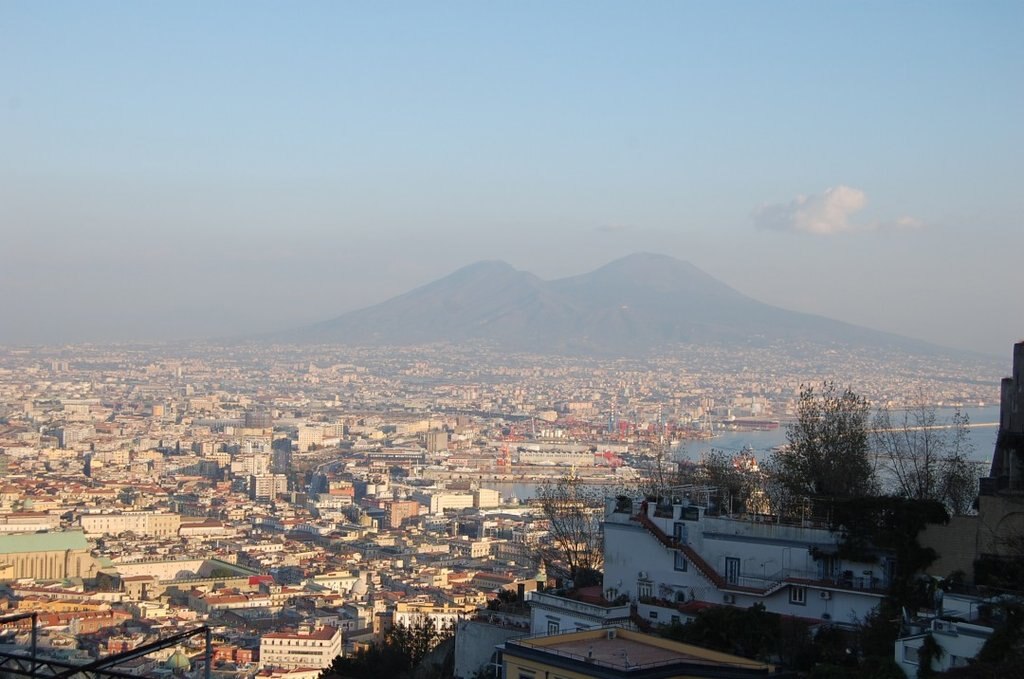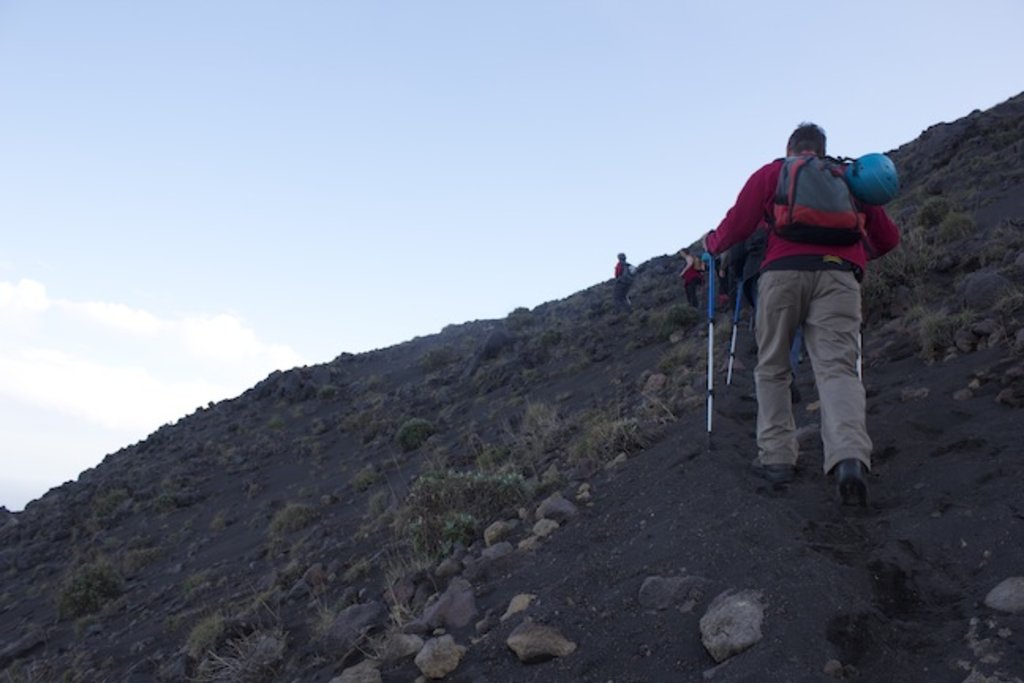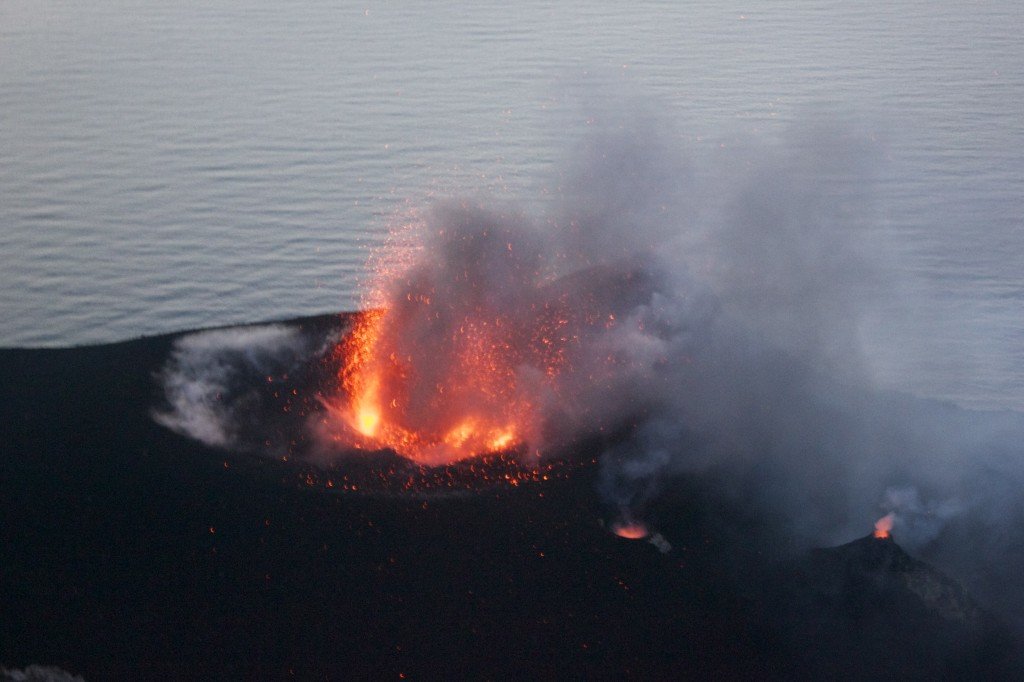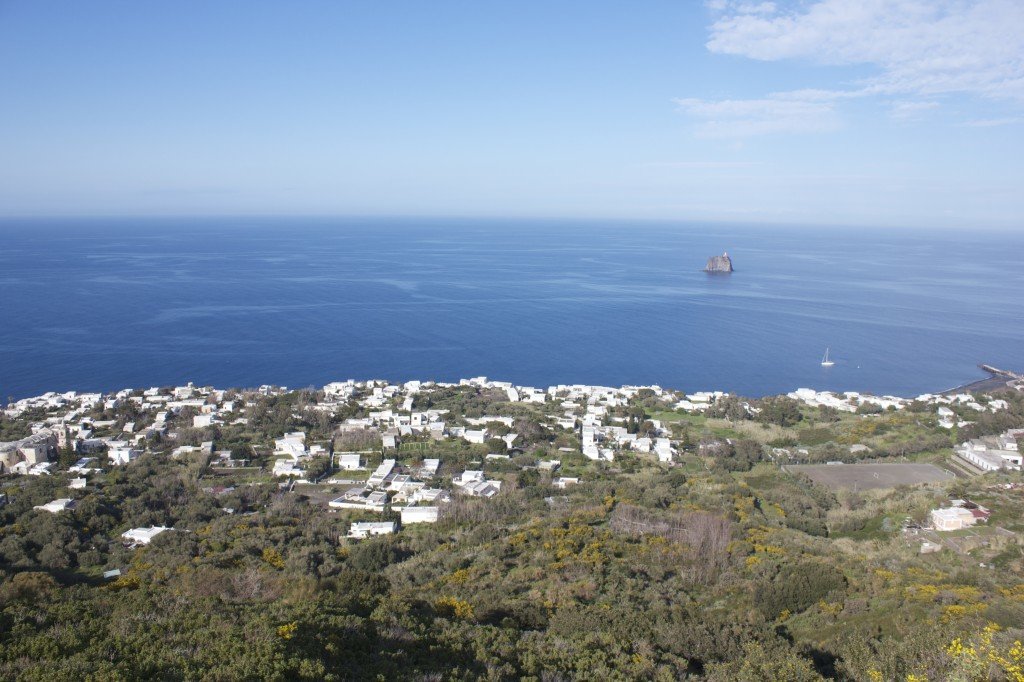The Best Volcano Hikes in Europe
“Europe has no shortage of mountain ranges to trek or forests to meander, but some of the continent’s best hikes are actually up the side of active volcanoes. Those willing to brave the smoking craters are rewarded with otherworldly landscapes of volcanic rock and sweeping views from the summits. Naturally, there is also smoke, steam, and the occasional lava burst thrown into the mix.
From Iceland to Italy, here are the best volcano hikes in Europe:

### Mt. Vesuvius (Italy)
Responsible for the demise of Pompeii, Mt. Vesuvius’s regular cloud of smoke is a constant reminder that the destructive Italian volcano is just taking a little slumber. Modern day residents of Naples are fairly confident of their safety and have tamed the rich soil on the slopes of the volcano to grow tomatoes and grapes that are sought after for their quality. Those curious to see the peak of Vesuvius up close on your holiday to Naples are faced with a fairly easy walk up to the crater. This is thanks largely to the fact that there is a car park 1,000 m (3,280 ft.) up the side of the mountain, which leaves just 150 m (500 ft.) of elevation to navigate on foot. Take the circular Gran Cono trail for an hour-long hike around the circumference of the crater for the best views of the countryside and the volcanic activity. No guides are needed to explore the well-marked trails.
### Mt. Pico (Portugal)
Montanha do Pico (Mt. Pico) dominates the landscape on Pico Island in Portugal’s Azores archipelago, and hiking it will surely be the highlight of your holiday to Portugal. The volcano is not only the highest in the island chain, at an elevation of 2351 m (7,700 ft.) it is also the tallest peak in Portugal. The dormant volcano tempts experienced hikers because the trek to the summit is challenging and steep, full of rock formations to be scaled and changing weather thanks to the impressive altitude. While it is not required, experienced guides are available to help hikers navigate to the summit. Guide or no guide, it is required that anyone taking the trail past 1,200 m check in at Casa da Montanha where they will be given a GPS so their location can be continuously monitored for safety.

### Mt. Etna (Italy)
The journey to reach the top of Sicily’s Mt. Etna can be as grueling or as leisurely as personal preference dictates. Those who wish to reach the crater without much physical exertion (maybe you’d just like to relax on your holiday to Sicily, after all!) can navigate a series of cable cars and buses nearly directly to the top. Hikers who prefer to go forward on foot can follow the trails from the southern Rifugio Sapienza, but can only arrive at an altitude of 2700 m (8,800 ft.) without a guide. Completing the full 3300 m (10,990 ft.) requires hiring an Alpine guide – but the summit may be officially off limits even with a tour leader depending on the level of volcanic activity.

### Eyjafjallajökull (Iceland)
In 2010, Iceland’s Eyjafjallajökull volcano wreaked havoc on air travel when it spewed a relatively small but critically placed cloud of ash into the air. The eruption made the volcano internationally famous, but the unpronounceable-to-many crater was already admired by adventure seekers thanks to the beautiful four-mile trail that leads to its summit. Unlike some of the volcano hikes in sunny southern Europe, trekking up Eyjafjallajökull requires considerably more gear because reaching the crater means traversing a glacial ice field; something to think of when planning your holiday to Iceland! Strap on the crampons and get climbing – preferably with a guide that can be hired in Reykjavik and take care of the all the arrangements for getting up and down the mountain safely.

### Stromboli (Italy)
The Aeolian Islands which stretch between Calabria and Sicily are the result of volcanic activity. In fact, one of the islands is even named Vulcano, thanks to its active caldera. But the most impressive active volcano in the archipelago is Stromboli. Nearly constantly smoking and rumbling, the round volcanic mountain looms over the small island on which it is found. Because it is a volatile volcano that is continuously experiencing minor eruptions, hikers are required to hire an experienced private guide or join a guided group. The trek to the summit, which stands at 926 m (3,034 ft.) above sea level, requires mastering a series of rocky switchbacks. The ascent takes close to six hours, but the views of the sparkling blue Tyrrhenian Sea and the impressive show of ash and lava make it well worth the climb.
Have you ever climbed a volcano?“
More Articles With Adventure
We’ve rounded up some of the best forest bathing spots around the globe where can combine your newfound houseplant obsession with breaking free from your home’s four walls.
These five hotels are perfect for relaxing and rejuvenating after experiencing some of the most beautiful walks our planet has to offer.
The travel blogger and presenter Macca, has put together his five favourite hotels for 2019, which are adventurous and unique in theme. So, if you want to stay somewhere incredibly different next year, take you pick from the bunch below.
For Dave McClane, from Man Vs Globe, Patagonia is one of his favourite regions of a continent he spent a year wandering. So, kick off your hiking boots, pour yourself a glass of Chilean red and warm up beside a roaring fire at one of these Patagonian hiking lodges.
Macca, an adventure travel blogger, puts together his five favourite places to stay on the Camino de Santiago in Spain – there’s no roughing it with these gorgeous properties.